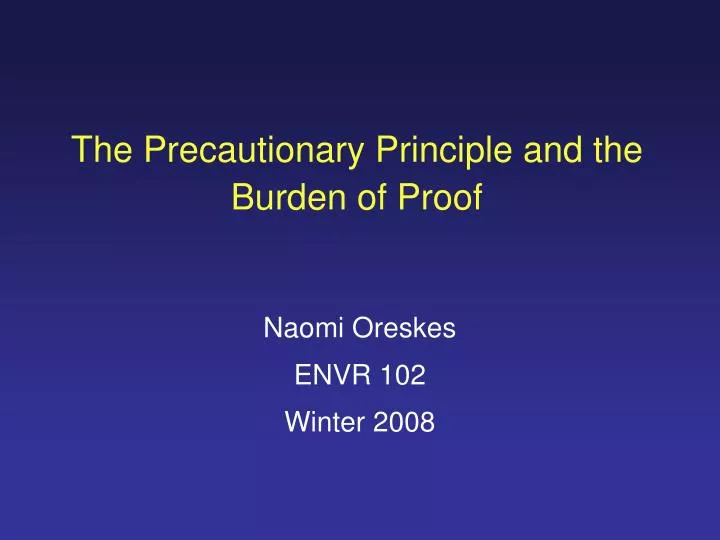
Modeled on the Canadian Environmental Assessment Act, the PDIA is envisioned as a process through which proposals for intellectual property reform, prior to their enactment, are evaluated by an independent review panel in order to determine their potential impact on the public domain. Assuming the importance of the public domain, and arguing that expansions in intellectual property protection risk harming the public domain, this chapter contends that it is appropriate to apply the precautionary principle in the intellectual property context in order to guard against harm to the public domain suggests several ways in which a precautionary principle (or a precautionary approach) could be applied in the intellectual property context and considers one possible instantiation of the precautionary principle in the context of intellectual property reform, namely in the form of a Public Domain Impact Assessment (PDIA). In the US, a precautionary approach has been applied in various ways in decisions about health, safety and the environment for about 30 years, much longer than. and to deal with related enquiries and complaints.This chapter considers whether the precautionary principle - a central element of contemporary environmental law and policy - can be usefully applied in the intellectual property context as a means through which the public domain can be protected.It calls for early measures to avoid and mitigate environmental damage and health. Establish two-way communication with stakeholders, in a pro-active, early stage and transparent manner, to ensure effective communication of information about uncertainties and potential risks The precautionary principle has come to the fore in risk discourse.It marks a re-evaluation of the development path chosen by many societies since the great period of industrialization that began in England in the late eigh teenth century. Create a managerial committee or steering group that oversees the company application of precaution, in particular risk management in sensitive issue areas The precautionary principle focuses on the philosophical and spiritual relationship between humankind and the environment which sustains our physical existence.Develop a company guideline on the consistent application of the approach throughout the company.
Precautionary principle code#

In turn, improving environmental performance means less financial risk, an important consideration for insurers. methods that deplete resources and degrade the environment) has a lower, long-term return than investing in sustainable operations. Investing in production methods that are not sustainable (i.e.While it is true that preventing environmental damage may entail additional implementation costs, environmental remediation often costs much more, for instance in the form of treatment costs, or in terms of company reputation.In other words, it is more cost-effective to take early action to ensure that environmental damage does not occur.


The key to a precautionary approach, from a business perspective, is the idea of prevention rather than remediation. The level of risk considered typically relates to standards of environment, health and safety. From a public policy view, precaution is applied as long as scientific information is incomplete or inconclusive and the associated risk is still considered too high to be imposed on society. When there is reasonable suspicion of harm, decision-makers need to apply precaution and consider the degree of uncertainty that appears from scientific evaluation.ĭeciding on the "acceptable" level of risk involves not only scientific-technological evaluation and economic cost-benefit analysis, but also political considerations such as acceptability to the public.

Precaution involves the systematic application of risk assessment, risk management and risk communication.
Precautionary principle full#
Introducing the precautionary approach, Principle 15 of the 1992 Rio Declaration states that “where there are threats of serious or irreversible damage, lack of full scientific certainty shall not be used as a reason for postponing cost-effective measures to prevent environmental degradation”. Businesses should support a precautionary approach to environmental challenges.


 0 kommentar(er)
0 kommentar(er)
